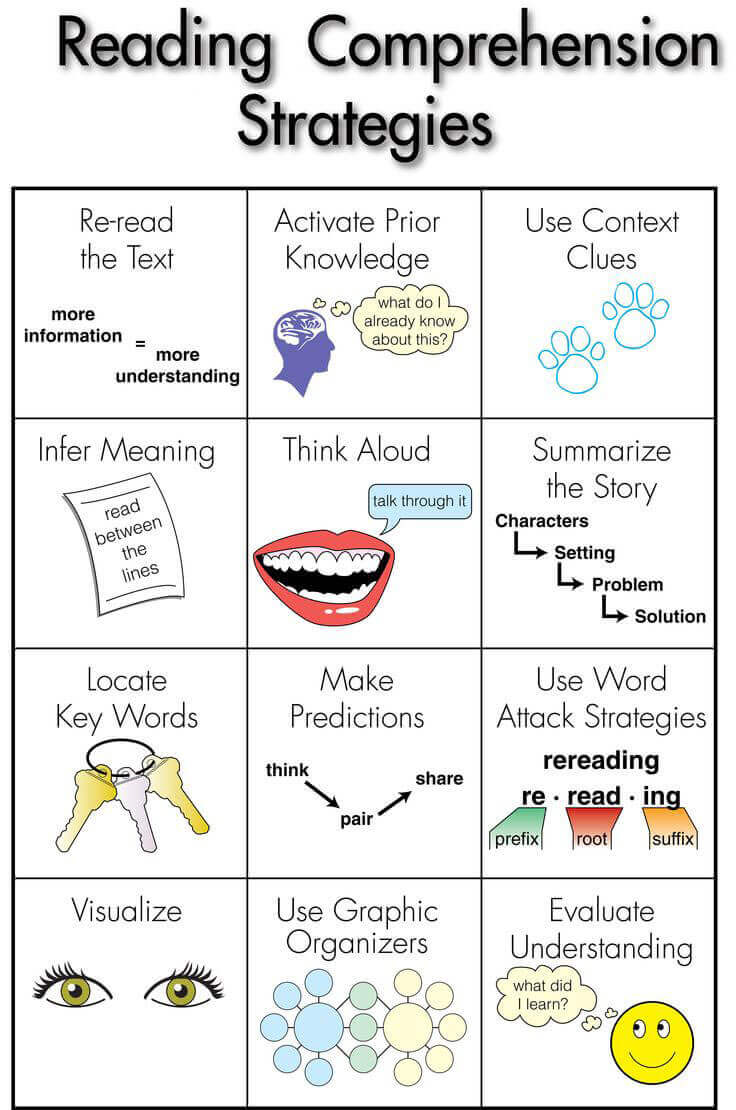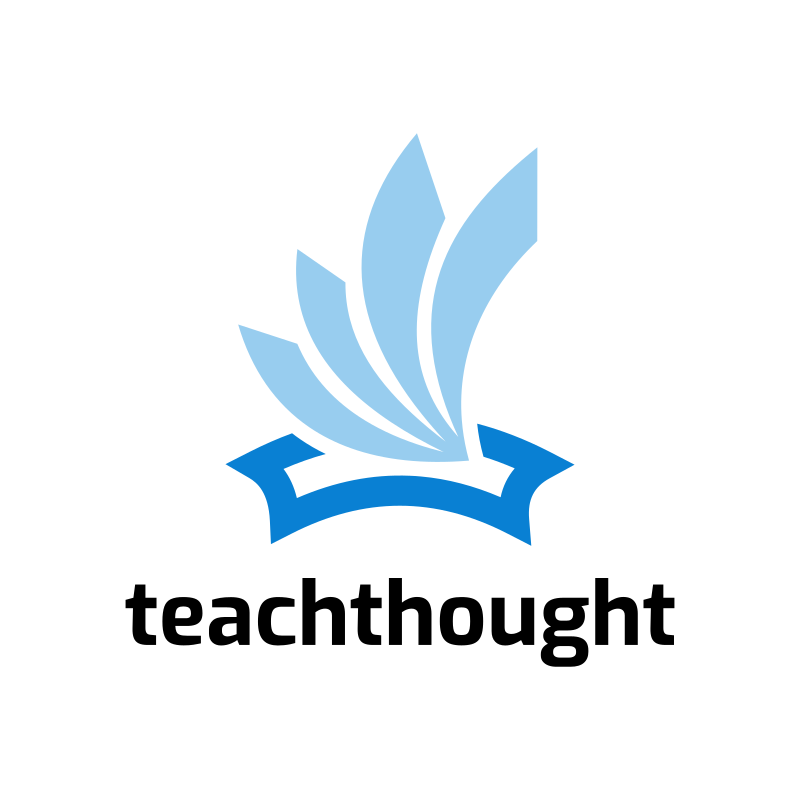
What Reading Strategies Work In Every Content Area?
by TeachThought Staff
Reading is simply a sequence of symbol interpretation.
By understanding that letters make sounds, we can blend those sounds together to make whole sounds that symbolize meaning we can all exchange with one another. By mastering the symbols and their most common contexts, reading becomes a practice in thought–less about decoding and more about understanding.
Without getting too Platonic about it all, reading doesn’t change simply because you’re reading a text from another content area. Only sometimes it does.
Science content can often by full of jargon, research citations, and odd text features.
Social Studies content can be an interesting mix of itemized information, and traditional paragraphs/imagery.
Literature? Well, that depends on if you mean the flexible form of poetry, the enduring structure of a novel, or emerging digital literature that combines multiple modalities to tell a story.
This all makes reading strategies somewhat content area specific. Stopping (maybe the most undervalued strategy ever) and Rereading might make more sense in science, while Visualization and Text Connections may make more sense reading literary works. Questioning the Text may make equal sense in both.
But if you’d like to start with a basic set of strategies, you could do worse than the elegant graphic above from wiki-teacher.com. (Useful site, by the way.) It lists 12 basic reading comprehension strategies, to which we’ve added 13 for a full 25.
Looking for related curricula ideas? Check out our Reading Comprehension Strategy Resources
25 Reading Strategies That Work In Every Content Area
1. Reread
Definition: Students revisit portions of a text to clarify, confirm, or enhance understanding.
Example: In a science class, after reading a complex lab procedure, students reread it to ensure key steps are understood before beginning the experiment.
2. Activate Prior Knowledge
Definition: Students recall relevant prior experiences or knowledge to connect with the text’s content.
Example: Before reading a historical account of the Civil War, the teacher discusses students’ prior knowledge about slavery and its effects.
3. Use Context Clues
Definition: Students use surrounding words or phrases to deduce the meaning of unfamiliar words.
Example: In a literature class, students decipher the meaning of ‘inebriated’ in a sentence: ‘After drinking too much, he stumbled in an inebriated state.’
4. Infer
Definition: Students make logical guesses or conclusions based on clues in the text combined with prior knowledge.
Example: In a mystery novel, students infer the identity of the culprit based on clues sprinkled throughout the story.
5. Think Aloud
Definition: Teachers or students verbalize their thought processes while reading.
Example: In an elementary classroom, the teacher pauses to say, ‘I’m wondering why the author uses this phrase here. Let’s keep reading to find out.’
6. Summarize
Definition: Students condense the main ideas of a text into a brief summary.
Example: After reading about mitosis in biology, students create a one-paragraph summary explaining the phases.
7. Identify Key Words
Definition: Students identify and focus on important words that carry the main ideas of the text.
Example: When analyzing a news article, students highlight terms like ‘recession,’ ‘unemployment,’ and ‘inflation’ to understand the main points.
8. Make Predictions
Definition: Students guess what will happen next based on textual evidence and personal experience.
Example: While reading a story in ELA, students predict how the character will resolve a conflict based on their actions thus far.
9. Use Word Attack Strategies
Definition: Students decode unfamiliar words by breaking them down into root words, prefixes, or suffixes.
Example: In a vocabulary exercise, students decode the word ‘photography’ by recognizing ‘photo’ (light) and ‘graphy’ (writing).
10. Visualize
Definition: Students create mental images of scenes, characters, or concepts in the text.
Example: In geography, students visualize the layout of landforms described in a passage about ecosystems.
11. Use Graphic Organizers
Definition: Students organize textual information visually using Venn diagrams, concept maps, flowcharts, etc.
Example: After reading about the water cycle in science, students create a flowchart showing evaporation, condensation, and precipitation.
12. Evaluate Understanding
Definition: Students assess their comprehension through reflection, quizzes, or discussions about the text.
Example: After reading a math word problem, students evaluate their understanding by rephrasing the problem in their own words.
13. Question the Text
Definition: Students ask questions before, during, and after reading to deepen understanding.
Example: A history student asks, ‘Why did the author focus on this particular battle? What were its broader effects?’
14. Stop
Definition: At unplanned or predetermined points, students pause to reflect or clarify understanding.
Example: During a complex chemistry text, the student stops midway to summarize the section on covalent bonds.
15. Monitor & Repair Understanding
Definition: Students notice when comprehension breaks down and take steps to fix it.
Example: If a student doesn’t understand a paragraph in a social studies text, they reread it or look up unfamiliar terms.
16. Paraphrase
Definition: Students restate the text or specific portions in their own words.
Example: After reading a scientific article, students rewrite the conclusion in their own words to demonstrate comprehension.
17. Annotate the Text
Definition: Students add notes, symbols, or highlights to engage with the text actively.
Example: In an English class, students underline metaphors, highlight new vocabulary, and write margin notes about literary themes.
18. Adjust Reading Rate
Definition: Students change their speed depending on the difficulty or purpose of the reading.
Example: A high school student slows their reading pace for a Shakespeare play while speeding up for an easier math word problem.
19. Prioritize Information
Definition: Students identify which parts of the text are most important and focus on them.
Example: In a textbook chapter, students prioritize bold terms, headings, and summaries for their study notes.
20. Use Graphic Notetaking
Definition: Students create visuals (like Cornell notes or sketches) to represent information.
Example: During a physics lecture on Newton’s laws, students create comic-like diagrams for each law.
21. Predict
Definition: Students anticipate what will come next using textual evidence.
Example: Midway through a novel, students predict how the protagonist will overcome a major obstacle.
22. Set a Reader Purpose
Definition: Students read with a specific purpose, such as to argue, summarize, or critique.
Example: Before reading an argumentative essay, students are instructed to identify its thesis statement and supporting arguments.
23. Text-Connections
Definition: Students relate the text to personal experiences (text-to-self), other texts (text-to-text), or broader world issues (text-to-world).
Example: After reading about environmental issues, students discuss connections to news stories on climate change (text-to-world).
24. Skim
Definition: Students quickly glance over the text to get the gist or main points.
Example: Just before a lecture, students skim the assigned reading for key headings and bullets to prepare for deeper comprehension.
25. SSQ (Stop, Summarize, Question)
Definition: A structured approach involving pauses to summarize major content and generate questions for discussion.
Example: In a history class, students stop every two paragraphs of a primary source, write down what it says in their own words, and create one discussion question.
We’ll gather these and put them in a Before Reading, During Reading, and After Reading matrix soon. Only because we like you.
See Also: 25 Self-Guided Reading Responses For Fiction And Non-Fiction
25 Reading Strategies That Work In Every Content Area
